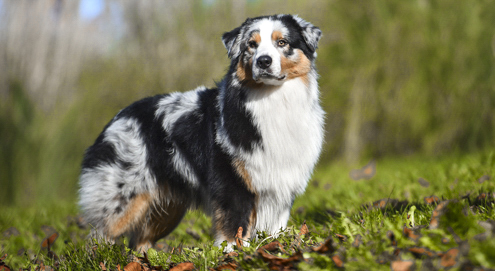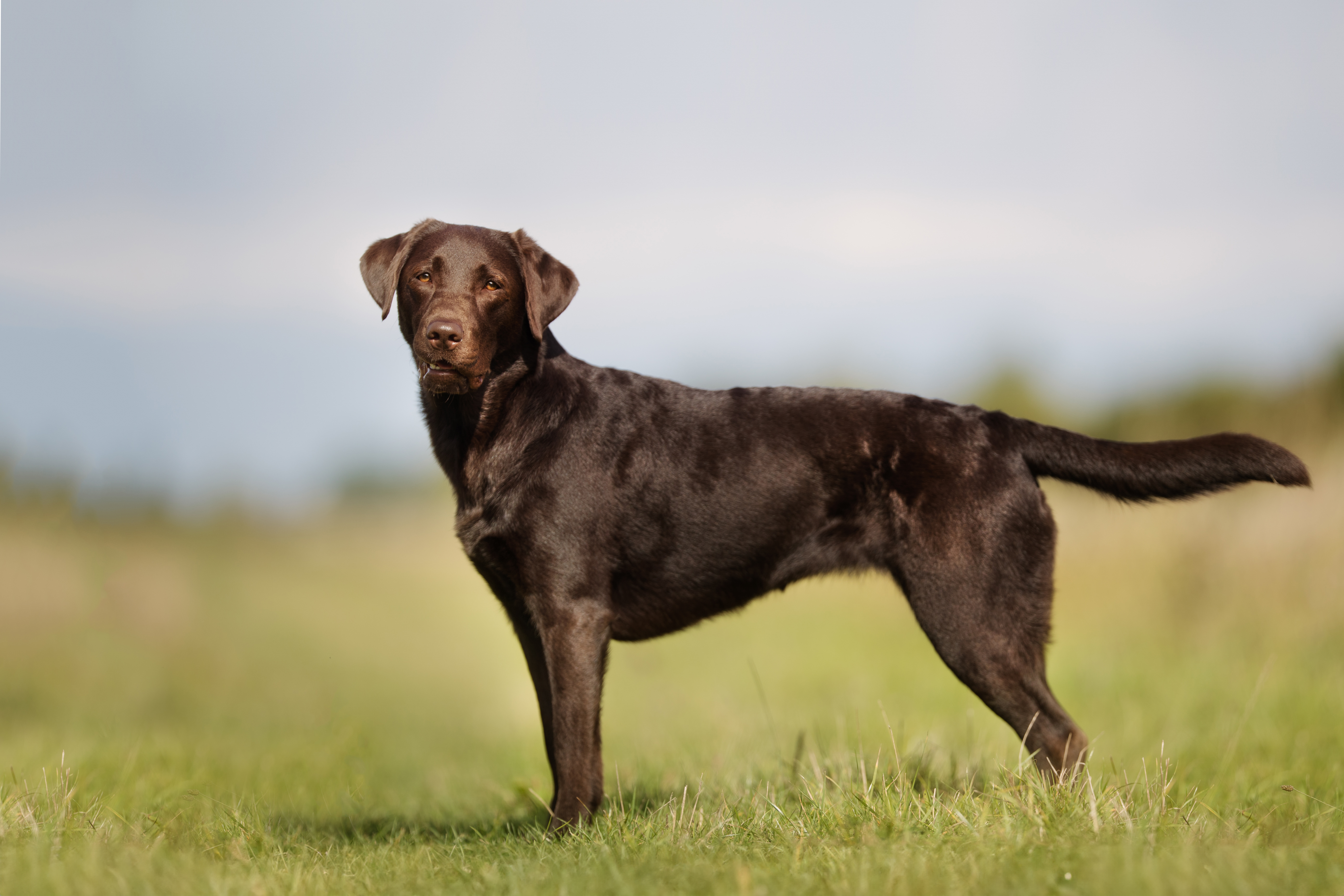
What is the best dog food?
The answer to the above question is subjective and depends on your own preference and that of your dog. We’ve made an overview of the most popular diets in every category, using our extensive range of dog foods.
The Australian Shepherd originated in California in the twentieth century, developed from Australian sheepdogs. These dogs were used for herding livestock. The Australian Shepherd is intelligent, clever, and eager to learn—balanced, watchful, and alert. Its coat is medium-length, straight or slightly wavy with a dense undercoat. The Australian Shepherd comes in a variety of markings. This dog is very loyal and closely bonded to its family.

Although the name suggests otherwise, the Australian Shepherd originated in the United States. The breed was developed to meet the needs of ranchers in the western U.S., with possible ancestors including German Shepherds, Basque Shepherds, and Collies. The official recognition and breed standard were only established in the 1970s.
The Australian Shepherd is known for its intelligence, energy, and devotion to its family. It is a very active dog that enjoys working and taking on challenges, making it ideal for dog owners who are willing to spend a lot of time on training, play, and sport. This dog is loyal and forms a strong bond with its owner but can be somewhat reserved toward strangers. Thanks to its eagerness to learn and natural herding instinct, it is easy to train and extremely well-suited for activities such as obedience, agility, and herding work. Additionally, it is a true family companion, provided it gets enough exercise and mental stimulation.
The Australian Shepherd has a medium-sized, athletic body with a straight back and deep chest. Its medium-length coat is thick and can appear in various colours and combinations, including black, red, blue merle, and red merle, often with white and/or copper markings. Its eyes can be brown, blue, amber, or a combination of these, and its ears are medium-sized, triangular, high-set, and hang forward. Some Australian Shepherds are born with a natural bobtail (short tail), while others have a longer tail.
The Australian Shepherd requires a lot of daily physical activity and mental stimulation to stay healthy and happy. Long walks, running, and dog sports such as agility and obedience training are ideal for meeting its needs. Around 1 to 2 hours of intensive activity per day is recommended to keep it physically and mentally fit. In addition to physical exercise, it also needs mental engagement, such as puzzles or training games.
The Australian Shepherd’s medium-length coat requires regular grooming. Weekly brushing helps prevent tangles and keeps the coat in good condition. During shedding seasons, more frequent brushing is necessary to remove loose hair. It is also important to keep its ears clean, brush its teeth regularly, and trim its nails. Although grooming requires some commitment, with a proper routine the dog will remain well-groomed and healthy.
The Australian Shepherd is generally a healthy breed, but like many purebred dogs, it can be prone to certain hereditary conditions. One of the most common issues is hip dysplasia, a malformation of the hip joints that can cause pain and mobility issues. Eye problems such as cataracts and epilepsy may also occur. Additionally, the MDR1 gene mutation is present in the breed, which causes sensitivity to certain medications. Regular veterinary check-ups and choosing a responsible breeder who screens parent dogs for genetic conditions are important to help minimise these health risks.
The Australian Shepherd has unique characteristics, but there are other breeds that are similar in terms of traits and appearance.
When purchasing an Australian Shepherd, it’s important to choose a responsible breeder who prioritises the health and well-being of the dogs. Check whether the breeder has tested the parent dogs for hereditary conditions and whether the puppies are well socialised. A good breeder will be transparent about health tests and offer guidance to ensure the puppy fits well within your family.
The price of an Australian Shepherd can vary depending on factors such as the level of care in breeding, pedigree, and health testing. While price is a consideration, it is especially important to focus on the health and socialisation of the puppy. A lower price may sometimes indicate that less attention has been paid to crucial aspects like health checks and socialisation.
Therefore, it is always advisable to choose a recognised and reliable breeder who will contribute to the long-term health and well-being of your new family member.
The Australian Shepherd is an energetic and intelligent dog that can adapt to different types of owners, but it also has specific needs that make it best suited for an active and dedicated owner. If you’re considering bringing an Australian Shepherd into your home, it’s important to understand what this breed requires to stay happy and healthy. Below are some key points to help determine whether this dog is a good fit for you:
The Australian Shepherd is suitable for an owner who:
All in all, the Australian Shepherd is an excellent choice for an active owner or family that has the time and energy to meet the needs of this intelligent and versatile breed. It is a great match for people who enjoy a dynamic and close bond with their pet.
Due to its high energy, intelligence, and strong work ethic, the Australian Shepherd is especially suitable for experienced owners. It learns quickly but can also be headstrong, which means training requires patience and consistency. For beginners, this breed can be a challenge—especially since it needs plenty of exercise and mental stimulation. Without enough attention and engagement, an Australian Shepherd may become bored, which can lead to unwanted behaviours. However, beginners who are willing to invest time and energy into training and activities can also enjoy the rewards of this eager-to-learn breed.
The Australian Shepherd is ideal for advanced or experienced owners because of its high energy, demanding grooming needs, and strong desire to work.

The answer to the above question is subjective and depends on your own preference and that of your dog. We’ve made an overview of the most popular diets in every category, using our extensive range of dog foods.

This blog article discusses 10 commonly kept medium-sized dog breeds with the most important characteristics associated with these breeds. Dogs in this category have an adult weight between 10-25 kg. This is our top 10 medium dog breeds. Looking for a different breed? Check out our dog breeds page.

If you've ever owned a dog, you'll know that every dog is unique. Dogs can have breed-specific characteristics, though, like joint or coat issues. To support these specific characteristics, Royal Canin has created special nutrition that meets the needs of individual dog breeds. Read all about breed-specific dog food in this article!

Add products to view your basket
We use cookies to help us serve you better and more personally. Functional cookies ensure that the website works properly and have an analytical function. We also use technology to track your behaviour anonymously, both inside and outside our website. Personal data and cookies may be used for personalisation or advertising. Want to know more? Read our privacy policy and cookie statement here. If you choose to reject, we will only place functional and analytical cookies.
